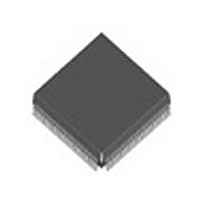BCM5208KPF Broadcom, BCM5208KPF Datasheet - Page 22

BCM5208KPF
Manufacturer Part Number
BCM5208KPF
Description
Manufacturer
Broadcom
Datasheet
1.BCM5208KPF.pdf
(62 pages)
Specifications of BCM5208KPF
Number Of Receivers
4
Data Rate
10/100Mbps
Operating Temperature Classification
Commercial
Operating Supply Voltage (min)
3.14V
Mounting
Surface Mount
Operating Temperature (max)
70C
Operating Temperature (min)
0C
Lead Free Status / RoHS Status
Not Compliant
Available stocks
Company
Part Number
Manufacturer
Quantity
Price
Company:
Part Number:
BCM5208KPF
Manufacturer:
ON
Quantity:
201
Company:
Part Number:
BCM5208KPF
Manufacturer:
BCM
Quantity:
846
Part Number:
BCM5208KPF
Manufacturer:
BROADCOM
Quantity:
20 000
n BCM5208
November 3, 1999
MULTI-SEGMENT REPEATERS
The BCM5208 supports multi-segment repeaters by allowing each transceiver to connect to any of the MII interfaces.
Interface selection is programmed through the Auxiliary Mode register (1Dh). When multiple transceivers are connected to
the same MII interface, the BCM5208 will multiplex the active port onto the MII bus. RXD[3:0], RXDV, RXER, RXC,
TXD[3:0], and TXER are multiplexed; CRS, TXEN, TXJAM, and RXEN are dedicated per port, and are not affected by port
multiplexing. Only one RXEN may be active at a time for PHY’s that are connected to the same MII interface. Each MII
interface will drive out when any transceiver connected to it is enabled (RXEN asserted). An MII interface will be disabled
when none of the receive enables for ports connected to it are active.
If the RPTR pin = ”1” at reset, all transceivers are isolated by default, until enabled and segmented to an MII interface by
writing to the Aux Mode register. If the RPTR pin =”0” at reset, all transceivers are active by default and each is segmented
to it’s own MII interface.
After operation is established at a certain speed, any loss of link followed by a new link at a different speed results in the
transceiver being isolated from its MII interface until it is re-segmented by an MII write to the Aux Mode register.
100BASE-FX MODE
Any of the BCM5208 transceivers may interface with an external 100BASE-FX fiber-optic driver and receiver instead of the
magnetics module used with twisted-pair cable. The differential transmit and receive data pairs will operate at PECL voltage
levels instead of those required for twisted-pair transmission. The data will be encoded using two-level NRZI instead of
three-level MLT3. The data stream is not scrambled for fiber-optic transmission. The stream cipher function is bypassed
when 100BASE-FX mode is selected.
The external fiber-optic receiver will detect signal status and communicate it to the BCM5208 through the SD± pins. In this
mode, the internal signal detect function is bypassed. The 100BASE-FX mode is automatically selected whenever a valid
differential signal is detected at the SD± input pins during a Hard or Soft Reset. Pulling both SD+ and SD- low
simultaneously, during Hard or Soft Reset, disables the 100BASE-FX mode. The Hard Reset condition sets the entire
BCM5208 quad into the FX mode, whereas, the Soft Reset condition may be used to set any individual slice into the FX
mode.
10BASE-T MODE
The same magnetics module is used to interface the twisted-pair cable in 10BASE-T mode and in 100BASE-TX mode. The
data will be two-level Manchester coded instead of three-level MLT3 and no scrambling/descrambling or 4B5B coding is
performed.
Data and clock rates are decreased by a factor of 10, with the MII interface operating at 2.5 MHz. An exception to this occurs
when the 10 Base-T repeater serial interface is enabled (SER10 pin is high). In this mode, data is exchanged only on
RXD[0] and TXD[0] at the rate of 10 Mbps.
PHY ADDRESS
Each transceiver in the BCM5208 will have a unique PHY address for MII management. The addresses will be set through
the PHY address pins. The pins are latched at the trailing end of reset. Transceiver 1 will have the address AAA00, where
AAA=PHYAD[4:2]. Transceivers 2-4 will have addresses AAA01, AAA10 and AAA11, respectively.
Every time an MII write or read operation is executed, the transceiver compares the PHY address with its own PHY address
definition. The operation is executed only when the addresses match.
B r o a d c o m C o r p o r a t i o n
Page 14
Document 5208-DS03-R¥¥¥¥¥












